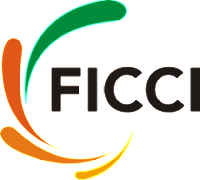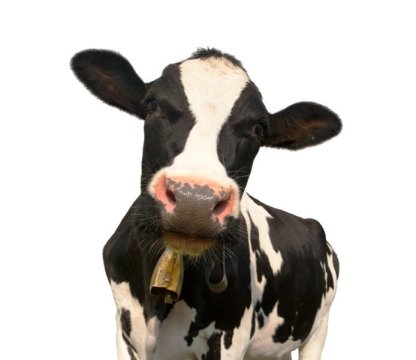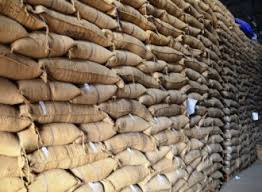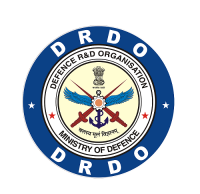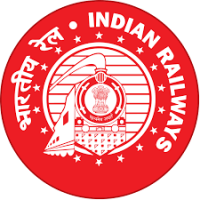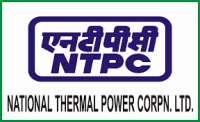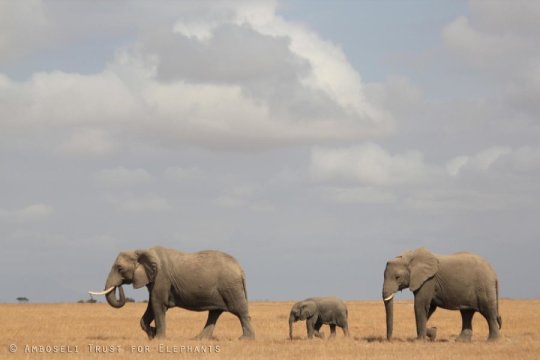News and ebooks mobile application Dailyhunt has picked up a minority stake for Rs 15 crore in OneIndia, the local news language portal owned by Rajesh Jain and BG Mahesh.
Dailyhunt picks up stake in OneIndia
Ajay Tamta opens Indian Fashion Jewellery & Accessories Show 2016
Inaugurating the show, Shri Tamta said that handicrafts in India come predominantly from the cottage, micro, small and medium sector. He said that the handicrafts sector plays a very important social and economic role in providing employment on full time or part time basis at the village, Kasba and town levels, to women and economically weaker sections of society.The Minister further said that Indian exporters have shown good performance in increasing the exports of fashion jewellery and accessories; however, they need to do more hard work in maintaining quality, price and delivery of their products to face the competition from other competitive countries as well as to promote exports from the country. He applauded the efforts of the exporting community for providing employment to the artisans and crafts-persons in villages and providing livelihood to their families. He suggested that new crafts other than those being practised in the craft clusters in villages should be introduced in order to generate sustained employment opportunities. He spoke of the need for development of crafts of Himalayan region as well. The Minister appreciated the good work being done by EPCH for promoting crafts of North East Region, by bringing products made by artisans and craftspersons of NER on this platform where large members of the international buying community from different countries are visiting to source their requirements. Minister assured the exporting community all possible help from Ministry of Textiles in promoting and supporting their crafts.
22,915 cr allocated for capitalization needs of Public Sector Banks for year 2016-17
In line with the announcements made under Indradhanush and the Union Budget, Government has undertaken an exercise to assess the capitalization needs of Public Sector Banks during the year 2016-17. The capital infusion exercise for the current year is based on an assessment of need as assessed from the CAGR of credit growth for the last five years, banks’ own projections of credit growth and an objective assessment of the potential for growth of each Public Sector Bank.
Consequent upon the above exercise, 75% of the amount collected for each bank is being released now to provide liquidity support for lending operations as also to enable banks to raise funds from the market. The remaining amount, to be released later is linked to performance, with particular reference to greater efficiency, growth of both credit and deposits and reduction in the cost of operations. Total Rs.22, 915 crore is being allocated to following banks at present.
S. No. |
Name of Bank | Amount (in crore) |
| 1 | Allahabad Bank | 44 |
| 2 | Bank of India | 1784 |
| 3 | Canara Bank | 997 |
| 4 | Central Bank of India | 1729 |
| 5 | Corporation Bank | 677 |
| 6 | Dena Bank | 594 |
| 7 | Indian Overseas Bank | 3101 |
| 8 | Punjab National Bank | 2816 |
| 9 | State Bank of India | 7575 |
| 10 | Syndicate bank | 1034 |
| 11 | UCO Bank | 1033 |
| 12 | Union Bank of India | 721 |
| 13 | United Bank of India | 810 |
| Total | 22915 |
Dharmendra Pradhan meets US Energy Secretary , Dr Ernest Moniz
Shri Dharmendra Pradhan, Minister of State (I/C) for Petroleum & Natural Gas met the US Secretary of Energy Dr Ernest Moniz in Washington . The two Ministers reviewed bilateral energy cooperation, especially in oil and gas sector between the two countries.
The two sides agreed to enhance institutional and technical cooperation in specific areas:
- Assessment and reassessment of conventional and unconventional hydrocarbon reserves in India, both in onshore and offshore;
- New technologies in development of biofuel(2nd generation ethanol and bio-diesel);
- Development of petroleum storage
The bilateral energy cooperation between the two countries had started in the form of energy dialogue in 2005 under which oil and gas is also discussed. Over the last decade, several areas of interest for cooperation like technology for production from marginal fields, shale structures, developing gas pipeline network, improving refinery efficiency etc.had been identified. During the meeting yesterday, the two Ministers agreed that there is a need for regular meetings of officials and experts from both sides for progress in cooperation in concrete areas.
It may be noted that GAIL has contracted for import of LNG from the US to the tune of 5.8 MMT per year from end 2017. Indian companies have also invested in shale oil and gas projects in the US, i.e. GAIL has 20% equity in Eagle Ford basin; IOC and OIL have 10% equity in Niobrara basin).
The two sides fondly remembered the visit of Prime Minister Shri Narendra Modi during June 2016, when all issues of importance including energy cooperation were discussed. During the visit, an MoU for cooperation in Gas Hydrates was also renewed for another period of five years. An earlier MoU on the same issue had expired in 2013.
On the margins, Shri Pradhan also received US Special Envoy & Coordinator for International Energy Affairs Mr. Amos Hochstein. He also addressed a gathering of business leaders, energy experts and senior US Government officials organised by Mr Daniel Yergin, Vice President of IHS.
IndianBureaucracy.com wishes the very best.
Happy cows make more nutritious milk !
Summary:Daily infusions with a chemical commonly associated with feelings of happiness were shown to increase calcium levels in the blood of Holstein cows and the milk of Jersey cows that had just given birth. The results could lead to a better understanding of how to improve the health of dairy cows, and keep the milk flowing, say scientists.
Daily infusions with a chemical commonly associated with feelings of happiness were shown to increase calcium levels in the blood of Holstein cows and the milk of Jersey cows that had just given birth. The results, published in the Journal of Endocrinology, could lead to a better understanding of how to improve the health of dairy cows, and keep the milk flowing.
Demand is high for milk rich in calcium: there is more calcium in the human body than any other mineral, and in the West dairy products such as milk, cheese and yogurt are primary sources of calcium. But this demand can take its toll on milk-producing cows: roughly 5-10% of the North American dairy cow population suffers from hypoglycemia — in which calcium levels are low. The risk of this disease is particularly high immediately before and after cows give birth.
Hypoglycemia is considered a major health event in the life of a cow. It is associated with immunological and digestive problems, decreased pregnancy rates and longer intervals between pregnancies. These all pose a problem for dairy farmers, whose profitability depends upon regular pregnancies and a high-yield of calcium-rich milk.
Whilst there has been research into the treatment of hypoglycemia, little research has focused on prevention. In rodents it has been shown that serotonin (a naturally-occurring chemical commonly associated with feelings of happiness) plays a role in maintaining calcium levels; based on this, a team from the University of Wisconsin-Madison, led by Dr Laura Hernandez, investigated the potential for serotonin to increase calcium levels in both the milk and blood of dairy cows. The team infused a chemical that converts to serotonin into 24 dairy cows, in the run up to giving birth. Half the cows were Jersey and half were Holstein — two of the most common breeds. Calcium levels in both the milk and circulating blood were measured throughout the experiment.
Whilst serotonin improved the overall calcium status in both breeds, this was brought about in opposite ways. Treated Holstein cows had higher levels of calcium in their blood, but lower calcium in their milk (compared to controls). The reverse was true in treated Jersey cows and the higher milk calcium levels were particularly obvious in Jerseys at day 30 of lactation — suggesting a role for serotonin in maintaining levels throughout lactation.
“By studying two breeds we were able to see that regulation of calcium levels is different between the two,” says Laura Hernandez. “Serotonin raised blood calcium in the Holsteins, and milk calcium in the Jerseys. We should also note that serotonin treatment had no effect on milk yield, feed intake or on levels of hormones required for lactation.”
The next steps are to investigate the molecular mechanism by which serotonin regulates calcium levels, and how this varies between breeds.
“We would also like to work on the possibility of using serotonin as a preventative measure for hypoglycemia in dairy cows,” continues Laura Hernandez, “That would allow dairy farmers to maintain the profitability of their businesses, whilst making sure their cows stay healthy and produce nutritious milk.”
More:Science
Sufficient storage capacity for foodgrains
On the basis of information given by the Minister of Consumer Affairs, Food and Public Distribution, Shri Ram Vilas Paswan, as on 30.06.2016, 816.24 Lakh MT capacity is available for storage of Central Pool food grains against actual stocks of 495.95 Lakh MT.
The Minister said that for the year 2015-16, budgetary allocation for construction of go-downs was Rs. 80.00 cr. under Plan Scheme. For the year 2016-17, an allocation of Rs. 52.00 cr. has been made. This allocation is for construction of go-downs only in the North Eastern States. The allocation is as per the requirement projected by Food Corporation of India (FCI) on the basis of land made available by the State Governments and status of the projects in the various states. The allocation is sufficient to meet the anticipated expenditure in various projects in 2016-17.
He said that the Government has approved a road map for construction of 100 Lakh MT silos across the country in a phased manner by 2019-20. The silos will be constructed by FCI and various state agencies in Public Private Partnership (PPP) mode through private investors. Capacity of 4.5 Lakh MT has already been created in Madhya Pradesh and FCI has selected the silo operators for construction and operation of silos at 6 locations for 2.5 Lakh MT capacity.
DRDO Restructuring
Defence Research and Development Organisation (DRDO) is involved in R&D of Defence Technologies / Systems & is not directly involved in acquiring infrastructure for defence manufacturing in the country. A Committee under the chairmanship of Dr. P. Rama Rao was constituted to conduct a comprehensive review of Defence Research and Development Organisation (DRDO).
The following recommendations of the Committee have been implemented after approval of Government:
• Nomination of Nodal Officers for structured interaction between DRDO and Services.
• Introduction of Integrated Financial Advice (IFA) Scheme for financial decentralization.
• Appointment of a dedicated Chief Controller for Human Resources (HR).
• Creation of Seven Technology Domain based Clusters each headed by one Director General.
• Restructuring of DRDO HQrs, Creation of Directorate of Systems Analysis and Modelling (SAM) and Directorate of Quality, Reliability and Safety (QR&S).
DRDO undertakes joint development with Indian industries as well as transfers technologies to the industries for manufacturing of products & systems in India. DRDO Guidelines for Transfer of Technology has already been promulgated to facilitate ‘Make in India’.
Defence Procurement Procedure (DPP) 2016 has also been promulgated to facilitate ‘Make in India; wherein acquisition of systems through design and development by DRDO has been elaborated.
Red meat consumption linked to increase in risk of developing kidney failure
Summary:Red meat intake was strongly associated with an increased risk of kidney failure among Chinese adults in Singapore who were followed for an average of 15.5 years, a new report suggests. No association was found with intakes of poultry, fish, eggs, or dairy products, while soy and legumes appeared to be slightly protective.
A new study indicates that red meat intake may increase the risk of kidney failure in the general population, and substituting red meat with alternative sources of protein from time to time may significantly reduce this risk. The findings appear in an upcoming issue of the Journal of the American Society of Nephrology (JASN).
Increasing numbers of individuals are developing chronic kidney disease (CKD), and many progress to end-stage renal disease (ESRD), which requires dialysis or a kidney transplant. Current guidelines recommend restricting dietary protein intake to help manage CKD and slow progression to ESRD; however, there is limited evidence that overall dietary protein restriction or limiting specific food sources of protein intake may slow kidney function decline in the general population.
To examine the relationship between dietary intake of major sources of protein and kidney function, a team led by Woon-Puay Koh, MBBS (Hons), PhD (Duke-NUS Medical School and Saw Swee Hock School of Public Health in National University of Singapore) analyzed data from the Singapore Chinese Health Study, a prospective study of 63,257 Chinese adults in Singapore. This is a population where 97% of red meat intake consisted of pork. Other food sources of protein included poultry, fish/shellfish, eggs, dairy products, soy, and legumes.
After an average follow-up of 15.5 years, the researchers found that red meat intake was strongly associated with an increased risk of ESRD in a dose-dependent manner. People consuming the highest amounts (top 25%) of red meat had a 40% increased risk of developing ESRD compared with people consuming the lowest amounts (lowest 25%) No association was found with intakes of poultry, fish, eggs, or dairy products, while soy and legumes appeared to be slightly protective. Substituting one serving of red meat with other sources of protein reduced the risk of ESRD by up to 62%.
“We embarked on our study to see what advice should be given to CKD patients or to the general population worried about their kidney health regarding types or sources of protein intake,” said Dr. Koh. “Our findings suggest that these individuals can still maintain protein intake but consider switching to plant-based sources; however, if they still choose to eat meat, fish/shellfish and poultry are better alternatives to red meat.”
More:Science
Steps taken to increase Production of Fruits & Vegetables
Minister of State for Agriculture and Farmers Welfare, Shri Sudarshan Bhagat has informed that various steps taken by the Government to increase the Country’s production and exports of fruits and vegetables are as under:
• Mission for Integrated Development of Horticulture (MIDH), a Centrally Sponsored Scheme, is being implemented during XII Plan w.e.f. 2014-15, for holistic growth of the horticulture sector covering all the horticulture crops including fruits and vegetables. The Mission envisages production and productivity improvement of horticulture crops including fruit and vegetable crops through increased coverage of area with improved cultivars, rejuvenation of senile orchards, protected cultivation, creation of water resources, adoption of Integrated Pest Management (IPM), Integrated Nutrient Management (INM), organic farming, including insitu generation of organic inputs. Capacity buildings of farmers and technicians is also provided for adopting improved technologies.
• To boost exports, recently a new scheme has been launched namely “Merchandize Exports from India (MEIS)” under Foreign Trade Policy 2015-20, wherein the exporters/farmers are incentivized for export of their goods/products including fruits and vegetables to specified markets.
Construction of Strategic Railway Lines
Government has accorded ‘in – principle’ approval for construction and undertaking Final Location Survey (FLS) of following railway lines along the India-China border…
• Missamari (Bhalukpong)-Tenga-Tawang;
• Bilaspur-Mandi-Manali-Leh;
• Pasighat-Parasuramkund-Rupai and
• North Lakhimpur-Bame (Along)-Silapathar.
IndianBureaucracy.com wishes the very best.
NTPC bags three SCOPE Corporate Communication Awards
NTPC has bagged 1st Prize of SCOPE Corporate Communication Excellence Awards 2016 in the Category of “Brand building through inclusive Growth initiatives”, 2nd Prize in the Category of “Best Internal Communication Programme ” and Consolation Prize in the Category of “Crisis Handling” at the Corporate Communication Summit organised by SCOPE in New Delhi today on 21st July, 2016.
Shri Saptarshi Roy, ED to CMD & ED (Corporate Planning and Corporate Communication) and Shri P.K Sinha, GM(Corporate Communication) received the award from Shri Sudhir Chaudhary, Senior Editor & Business Head of Zee News and Padma Shri Dr. K.K. Aggarwal, in the presence Shri Nirmal Sinha, Chairman, SCOPE & CMD, HHEC; Dr. U.D. Choubey, Director General, SCOPE amidst other dignitaries.
IndianBureaucracy.com wishes the very best.
Scientists and Zoos team up on landmark Elephant Welfare Project
Summary:Social and environmental interactions may be far more important for elephants than simply the size of their enclosures, reports a team of researchers conducting this largest ever, multi-institutional zoo-elephant welfare project.
Given that elephants are the largest land mammals on the planet, one might expect that when it comes to enclosures for zoo elephants, size matters.
However, a newly released study in which the University of California, Davis, played a key role reveals that social interactions and having an array of opportunities to engage with their surroundings may be more important for elephants than space.
The research effort is the largest multi-institutional zoo-elephant welfare project conducted to date and includes nine studies that analysed the lives of 255 African and Asian elephants in 68 accredited North American zoos. The results will be released July 14 as a special collection in the open-access journal PLOS ONE, published by the Public Library of Science.
The goals and comprehensive findings of these studies will be presented in a companion overview.
“This is the first coordinated set of studies aimed at evaluating a number of behavioural and physical aspects of welfare for the North American zoo elephant population and, importantly, identifying the most important aspects of elephant management, housing and care,” said Cheryl Meehan, a UC Davis staff research associate in the Department of Population Health and Reproduction, School of Veterinary Medicine. Meehan provided consulting services to the project through her organisation, AWARE Institute, and is the lead author for the overview.
Time alone is risk factor for zoo elephants
The full research collection contains studies on elephant welfare factors including behaviour, body condition, foot-and-joint health, female reproductive function and walking distance.
Some of the results confirmed the researchers’ expectations. For example one of the studies found that spending time on hard flooring was the No. 1 risk factor for both foot and musculus skeletal health problems, which were common in the elephant population.
Other findings revealed previously unknown links between elephant management and welfare. For example, a research team led by Joy Mench, professor in the UC Davis Department of Animal Science, and graduate student Brian Greco found that more than three-quarters of the elephants studied performed stereotype behaviours such as swaying or rocking.
These types of behaviours are considered to be among the most important behavioural indicators that the welfare of a captive animal is compromised, but their causes are difficult to pinpoint.
The researchers also found that for elephants, spending time alone was an important risk factor, while spending more time in larger social groups, particularly those that included young animals, had a protective effect. Additionally, having experienced multiple inter-zoo transfers increased an elephant’s risk of performing stereotype behaviour.
The authors interpret these results to mean that the social lives of elephants play a large role in their behavioural health and recommend that zoo elephant programs consider management changes to support larger, multi generational social groupings.
Meehan said that some of the other results were quite surprising.
Enclosure size was surprisingly less important
“We expected to find associations between the size of zoo exhibits and welfare, but space ended up being of minor importance when compared to social factors and management practices such as enrichment programs,” she said.
For example, female elephants who experienced a wide variety of enrichment opportunities and feeding options, such as puzzle feeders that require work to gain access to food, were more likely to have normal reproductive function. This result indicates that day-to-day management practices could be an important tool in addressing the reproductive issues that are particularly common among female African elephants.
Mench said that the research team hopes the results of these studies will provide zoos with “objective information about how elephants are faring behaviourally, physiologically and emotionally, and the positive and negative outcomes of various zoo housing and management practices.”
More: Science


